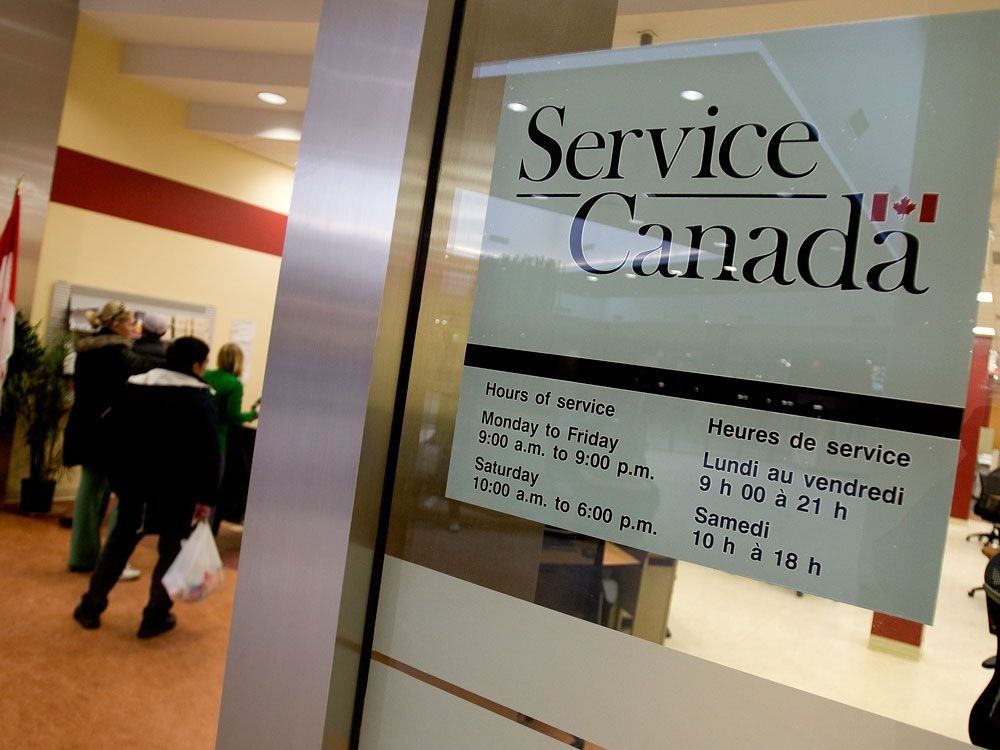Shaunavon, Saskatchewan — The town the internet forgot

Spotty internet connections and crappy-to-non-existent cell service mean that everything is more complicated, maddening and productivity sapping

Article content
Internet connectivity, robust cellphone signals, download and upload speeds, megabits and wireless what-zits were not things that Lauren Johnson ever thought much about, if it all, growing up in northwest Calgary. Having high-speed internet around the Johnson home and Calgary at large was as normal as having food in the fridge.
Advertisement
Story continues below
This advertisement has not loaded yet, but your article continues below.
Article content
Then, a few years back, love entered the picture. Johnson met Kobie Guenther, a nice young fella from a farm near Shaunavon, a small town in southwest Saskatchewan, population 1,700, best known for its annual rodeo and for being the hometown of hockey great Hayley Wickenheiser.
Johnson, now 28, was hooked. She moved to Shaunavon three years ago and today is the town’s economic development officer, a job title deserving of a second title, something along the lines of: Person in Charge of Getting Shaunavon Better Internet.
“It would blow your mind,” she said, referring to the poor state of local connectivity. For example, she recently had to upload a photo of a local park to a Google drive. The estimated upload time was 38 minutes for one measly photo. Worse, her internet connection kept conking out.
Advertisement
Story continues below
This advertisement has not loaded yet, but your article continues below.
Article content
“Honestly, everything else about Shaunavon is awesome,” she said. “The people, the sense of community, the parks, the amenities, I mean everything is awesome, but …”
Don’t try uploading a photo to a Google drive, or anything else. Spotty internet connections and, in more rural locales, particularly low-lying areas, crappy-to-non-existent cell service mean that everything — from filing legal documents and taxes and getting software updates and oil well data, to troubleshooting farm machinery and automobiles and even learning online — is more complicated, maddening and productivity sapping.
Shaunavon’s internet woes are not about residents accessing Netflix, they’re about the continued survival of a Prairie burgh that sprang up in 1913 when the Canadian Pacific Railway laid track nearby and built a station there. The population jumped to 800 from zero within a year. Trains meant connectivity, which bred a measure of prosperity, and the town grew as a hub for grain farmers, ranchers and, lately, oilfield workers.
Advertisement
Story continues below
This advertisement has not loaded yet, but your article continues below.
Article content

Infrastructure put Shaunavon on the map. Keeping it and other rural places like it on there for the next 100 years requires a massive infrastructure investment — measured in megabits, instead of track miles — as well as the conviction of outsiders, such as Lauren Johnson, that life in a small town is a life that can’t be beat.
“We’ve seen more people looking to leave major cities, like Toronto and Calgary, and move to rural areas and small towns during the pandemic,” she said. “We want to be able to promote ourselves as a great place to live and to work remotely from.”
Shaunavon can’t do that alone. Saskatchewan is atypical when it comes to telecom providers. There is no Rogers Communications Inc., Bell Canada or Telus Corp. lording their dominance over the little guys, talking about expanded 5G-service, shareholder returns and such, while dividing the spoils into more or less three parts.
Advertisement
Story continues below
This advertisement has not loaded yet, but your article continues below.
Article content
Saskatchewan’s internet alpha is Saskatchewan Telecommunications Holding Corp. (SaskTel), a Regina-based Crown corporation with 4,000 employees and a monumental task in front of it. About 40 per cent of Saskatchewanians live on farms or in rural communities of less than 5,000 people. There is an abundance of land — 40 per cent of the arable land in Canada — and not a lot of people.
That is a serious pickle for a government-owned service provider, particularly when the federal government keeps uttering lofty promises, such as: 98 per cent of Canadians are to be connected to high-speed internet by 2026.

“Good reliable internet isn’t a luxury, it’s a basic service,” Prime Minister Justin Trudeau said in November 2020.
Advertisement
Story continues below
This advertisement has not loaded yet, but your article continues below.
Article content
He’s right: it is a basic service, or at least it should be. But saying the words and throwing a ton of money at the problem nationally, with the $2.4-billion Universal Broadband Fund, the Canadian Radio-television and Telecommunications Commission’s $750-million Broadband Fund and $2 billion in funding from the Canadian Infrastructure Bank, plus a wide range of provincial development programs, are a lot easier to do than actually reaching targeted service levels.
“It is not as simple as changing a few wires, here and there, and you are good to go,” SaskTel spokesperson, Greg Jacobs, said.
Jacobs isn’t making excuses; he is stating a fact.
Shaunavon is already on a list with 44 other rural communities that have been promised high-speed fibre-optic broadband internet by the end of 2023.
Advertisement
Story continues below
This advertisement has not loaded yet, but your article continues below.
Article content
But here’s the challenge: upgrading to fibre-optic broadband often involves digging, lots of digging. On the Prairies, the ground is frozen, or near to it for six months a year, making for a short construction season. Case in point: the daily low in Shaunavon on Oct. 14 was -3 C.
In other words, change is coming, but change takes time. In the meantime, the locals and farmers, such as Devin Harlick, have to keep their fingers crossed.

Harlick grew up on a ranch near Shaunavon, but was parked on a hill near Central Butte in his white Dodge pickup at 9 a.m. on a recent Thursday morning.
“I parked on top of a hill because there’s dismal cell service down there,” he said.
Like many farmers, Harlick also has a day job. His involves working as a client success manager for a precision agriculture company. Farming has gone high tech since the Little House on the Prairie days of Laura Ingalls Wilder.
Advertisement
Story continues below
This advertisement has not loaded yet, but your article continues below.
Article content
There are drones, global positioning systems, micro-weather stations, data tracking, yield mapping, crop genetics and high-priced combines packed with state-of-the-art software. Stir them all together and the modern agricultural operation is more plugged into technology — and more in need of speedy connectivity — than your average city slicker with a smartphone and a company-issued laptop.
And how is that connectivity actually going? Not great, according to the Canadian Internet Registration Authority (CIRA), which manages the country’s .ca domain.
CIRA has clocked the median download speed in rural Saskatchewan at 7.83 megabits per second, and median upload speed at 1.39 Mbps. Those numbers fall acres short of the national 50/10 Mbps download/upload goal the CRTC has set for Canada.
Advertisement
Story continues below
This advertisement has not loaded yet, but your article continues below.
Article content
Torontonians, by contrast, zip along at a 59/13 median clip and Calgarians get 61/14. In Saskatoon, which boasts the quickest rates in the province, speeds are 49/10.
“No matter how you slice it, the internet in most of Saskatchewan is pretty darn slow,” said Josh Tabish, CIRA’s public affairs manager.
What “pretty darn slow” means when Harlick’s John Deere S690 combine, a rig that is worth more than $300,000, conks out in a field that is an internet/cell dead zone is that a technician in Swift Current can’t remotely connect to diagnose the problem and potentially fix it from their desk.

Having a technician drive out to the farm for a service call costs $400 or more. The combine sits idle, awaiting a fix. Productivity gets lost. Farmer Harlick fumes.
Advertisement
Story continues below
This advertisement has not loaded yet, but your article continues below.
Article content
Another example: To optimize yields, farmers use crop yield mapping tools, where data can be accessed in real time. But data can’t be accessed in real time unless the farmer can connect to it.
“It is incredibly frustrating,” Harlick said.
It’s an opportunity lost. A better-connected rural Saskatchewan could contribute an additional $1.2 billion to the province’s gross domestic product, according to the Canadian Wireless Telecommunications Association.
It gets worse. Burbling away beneath the day-to-day connectivity headaches is a human resources crisis. The Canadian Agricultural Human Resources Council (CAHRC) reported that 1,600 agricultural jobs went unfilled in Saskatchewan in 2017, costing the sector $574 million in lost sales.
Advertisement
Story continues below
This advertisement has not loaded yet, but your article continues below.
Article content
To help address the labour shortfall, the CAHRC recommends, among other things, that the province find better ways to communicate “the benefits of agricultural work to a younger demographic.”
Good luck communicating that message to younger people without better access to high-speed internet. Harlick said he can offer a prospective farm manager free housing and good pay, but they’re not interested in the job if they can’t connect, their spouse can’t work remotely and their kids can’t access school online.
“It is a big ask to have someone move from the city to the middle of nowhere and have limited cell reception and internet,” he said.
The Agricultural Producers Association of Saskatchewan (APAS) channelled the farmers’ frustrations into a rural connectivity task force. APAS president Todd Lewis farms 10,000 acres near Gray, a village about a half-hour south of Regina.
Advertisement
Story continues below
This advertisement has not loaded yet, but your article continues below.
Article content

Until a new cell tower was planted nearby, he could look out over his land on a clear winter’s night and see the winking lights of SaskTel’s Regina offices in the distance, but he was unable to actually call them.
“This isn’t about getting Netflix,” he said. “There have been some improvements, but there is an ongoing problem and an ever-widening need, and we need to be doing a better job of catching up.”
Shaunavon residents tend to talk about the “centre” when they speak about local internet service. They’re referring to a beige, one-storey building on Centre Street occupied during business hours by two SaskTel technicians who are keeping the town’s internet service plodding along until the promised upgrades are complete. The further one gets from the centre, the worse the internet.
Advertisement
Story continues below
This advertisement has not loaded yet, but your article continues below.
Article content
-

Rogers feud pits chairman against family amid $16-billion Shaw deal
-

Its core business shattered, Huawei seeks new ways to remain relevant in 5G space
-

Rogers gripped by boardroom drama as share price trails rivals
One business owner, who asked not to be named for fear their customers would be spooked if they learned they have slow internet, is not near the centre. “We get by. But there are days when the internet is so slow when it should be lightning speed. We live in a digital world. It is 2021.”
It was 1913 when the railroad made Shaunavon, drawing people, their dreams and ideas of a better life to a corner of the Prairies not far from the Montana border. Lauren Johnson, the town’s economic development officer, can see the magic of the place, even if she can’t upload a photo of it to her Google drive.
“I wouldn’t move back to Calgary, even if I had the option to,” she said. “There is hope here, lots of hope.”
Hope indeed, for better internet days ahead.
• Email: joconnor@nationalpost.com | Twitter: oconnorwrites
Advertisement
Story continues below
This advertisement has not loaded yet, but your article continues below.








